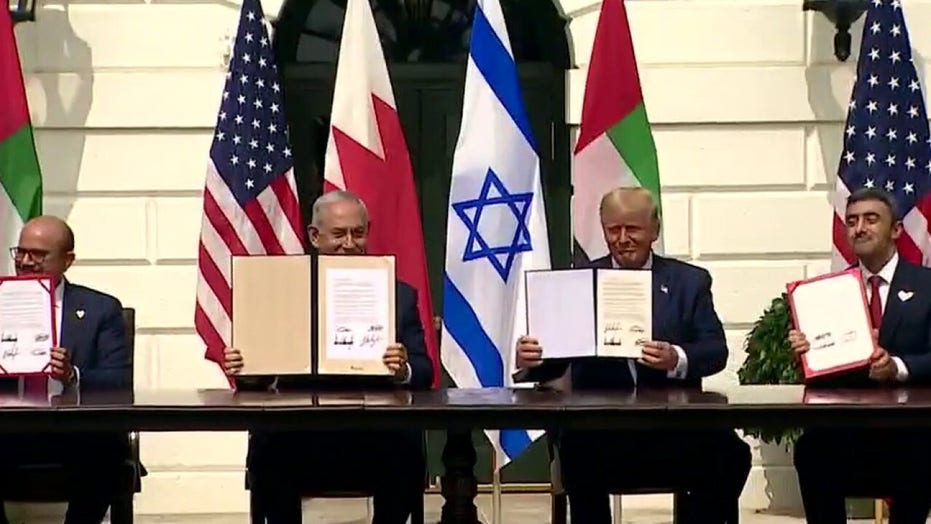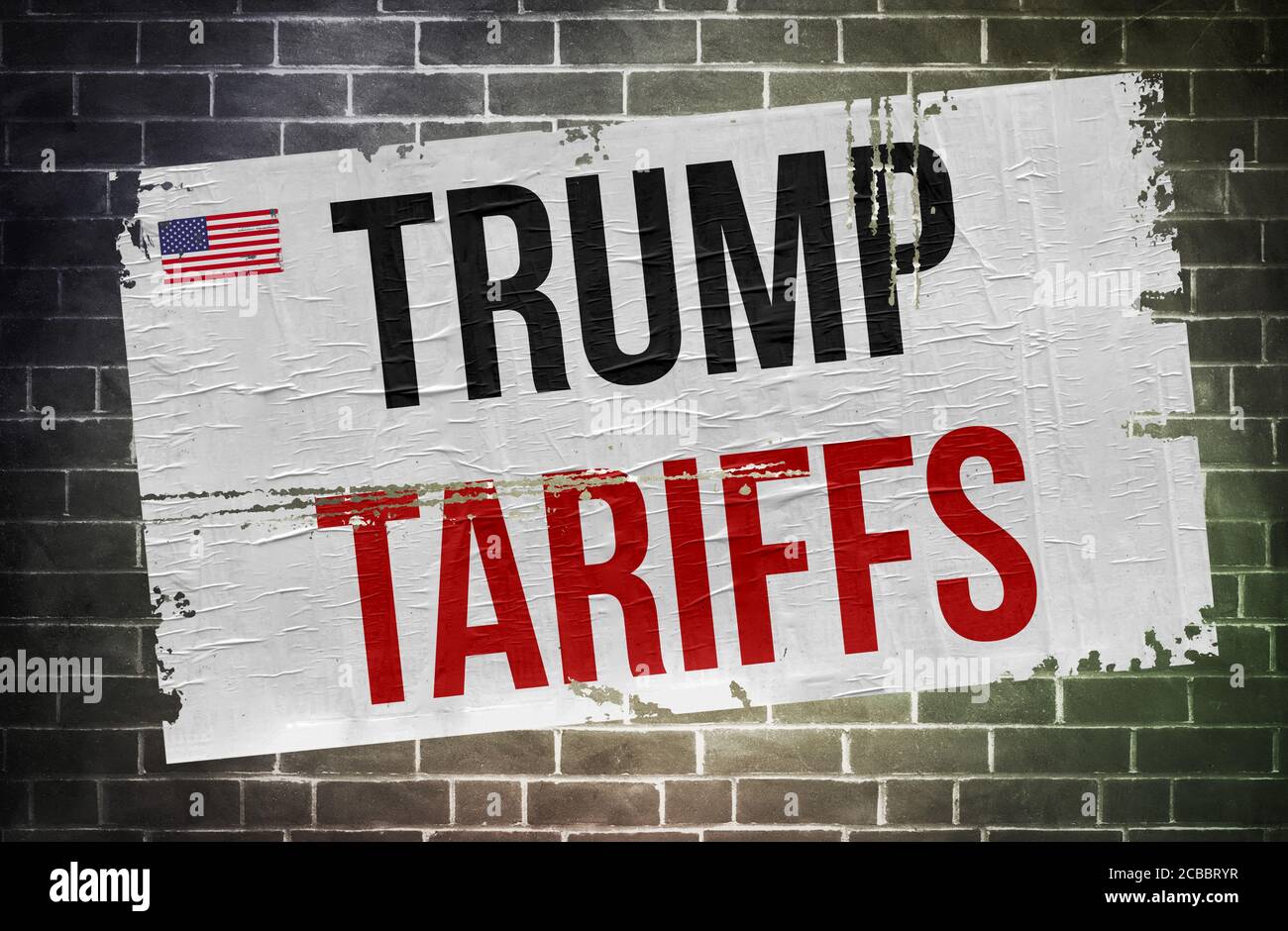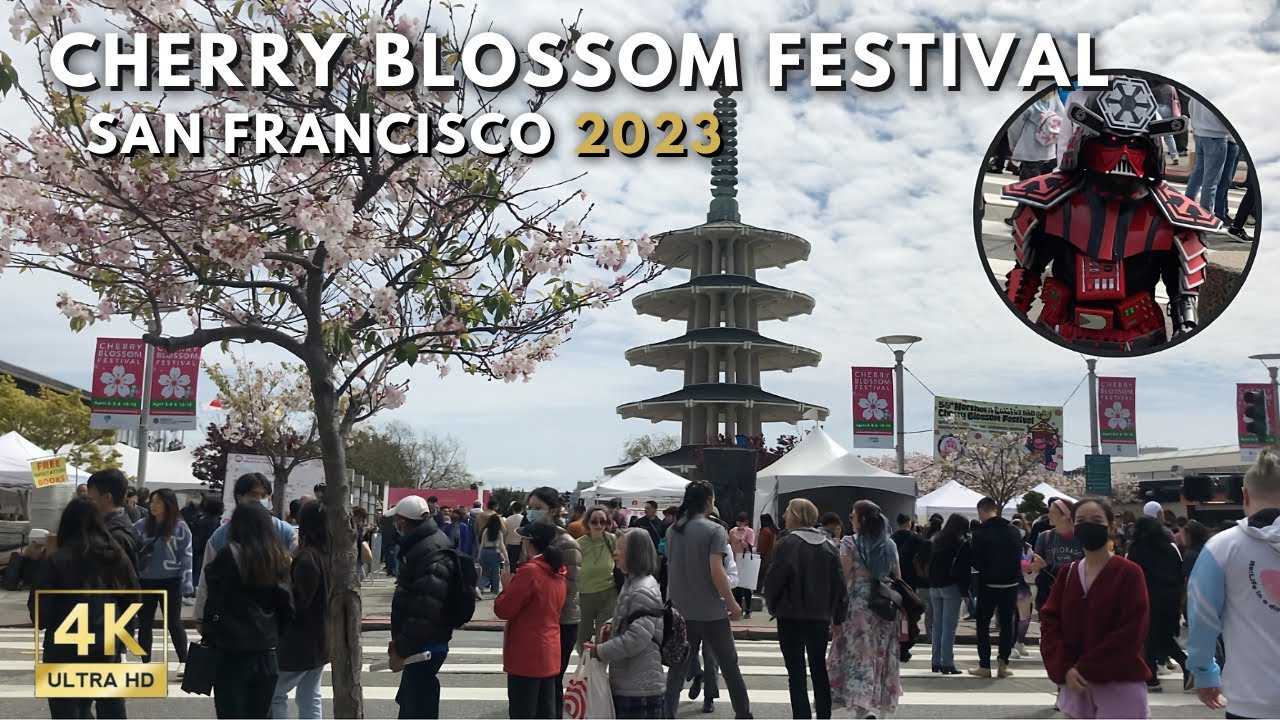The Consequences Of Trump's Middle East Trip: A Regional Power Shift?

Table of Contents
Shifting Alliances and Regional Dynamics
Trump's Middle East trip significantly altered existing alliances and regional dynamics, creating both opportunities and challenges for stability. The ripple effects of his policies continue to shape the region today.
The Abraham Accords and their Impact
The Abraham Accords, brokered in part due to the groundwork laid during Trump's visit, represent a landmark achievement in Middle Eastern diplomacy.
- Normalization of relations between Israel and several Arab nations: The UAE, Bahrain, Morocco, and Sudan normalized relations with Israel, a dramatic shift in decades-long regional dynamics. This signaled a willingness by some Arab states to prioritize shared interests, such as countering Iran, over the Palestinian issue.
- Impact on Iran's regional influence: The Accords were partly designed to counter Iran's growing influence in the region, creating a new strategic alliance against Tehran. However, the extent to which this has truly diminished Iran's power remains debatable.
- Long-term implications for peace in the region: While celebrated by some as a step towards regional peace, critics argue the Accords marginalized the Palestinian issue, potentially hindering long-term peace efforts. The agreements' lasting impact on peace prospects remains uncertain.
- Criticism and challenges faced by the accords: The accords faced criticism for bypassing the traditional Palestinian peace process and prioritizing strategic alliances over addressing the core issues of the Israeli-Palestinian conflict. Sustaining these agreements and expanding their scope will require continuous diplomatic efforts.
The strategic goals behind the Accords were multifaceted, aiming to contain Iran, foster regional stability, and enhance Israel's regional standing. The extent to which they altered the existing power dynamics is a subject of ongoing debate among experts.
Strained Relationships with Traditional Allies
Trump's approach to traditional US allies in the Middle East was marked by a departure from previous administrations' policies. This led to both opportunities and challenges for regional stability.
- Tensions with Turkey: Trump's relationship with Turkey was often turbulent, marked by disagreements over issues such as Syria and the purchase of Russian S-400 missile systems. This strained a key NATO alliance.
- Shifting relationships with Saudi Arabia: While maintaining close ties with Saudi Arabia, Trump's approach differed from his predecessors, leading to some adjustments in the strategic partnership between the two countries.
- Impact on the overall US strategy in the region: Trump's "America First" approach led to a reassessment of US military commitments and engagement in the region, raising questions about America’s long-term role as a regional power broker.
- Criticism of Trump's approach to traditional allies: Many criticized Trump's transactional approach to foreign policy, arguing that it undermined long-standing alliances and created instability.
Trump's policies significantly impacted existing alliances, creating new challenges for regional stability and raising questions about the future of US engagement in the Middle East.
Impact on the Israeli-Palestinian Conflict
Trump's Middle East trip significantly impacted the already complex Israeli-Palestinian conflict.
Trump's "Deal of the Century"
Trump's "Deal of the Century," unveiled in 2020, aimed to resolve the Israeli-Palestinian conflict. However, it was met with widespread rejection.
- Key proposals of the plan: The plan proposed a two-state solution with significant territorial concessions from the Palestinians but fell short of addressing key Palestinian concerns like the right of return for refugees.
- Palestinian reaction and rejection: The Palestinian Authority rejected the plan outright, viewing it as heavily biased towards Israel.
- International response: The plan received mixed international responses, with many expressing concerns about its feasibility and impact on the peace process.
- Impact on the peace process: The plan effectively stalled the peace process, further hardening positions on both sides.
- Long-term consequences for the conflict: The plan's failure to achieve a lasting solution contributed to the continued stalemate and heightened tensions between Israel and Palestine.
Increased Tensions and Violence
Trump's policies inadvertently contributed to increased tensions and violence in the region.
- Escalation of violence in the West Bank and Gaza: The period following Trump's trip witnessed several escalations of violence between Israelis and Palestinians.
- Response from regional and international actors: Regional and international actors responded to the violence with mixed levels of engagement, making it difficult to mitigate tensions effectively.
- Impact on peace negotiations: The increased violence further complicated any attempts at reviving peace negotiations.
- Effect on civilian populations: The heightened conflict caused significant suffering among civilian populations in the West Bank and Gaza.
The direct and indirect consequences of Trump's policies significantly impacted the level of violence and instability in the region, further complicating efforts toward a peaceful resolution.
The Rise of New Power Players
Trump's Middle East trip and subsequent policies inadvertently reshaped the regional power dynamic, leading to a rise in influence for several actors.
Iran's Response to Trump's Policies
Trump's withdrawal from the Iran nuclear deal and imposition of sanctions had a significant impact on Iran's regional actions.
- Iran's increased regional activity: Iran, facing increased pressure, increased its regional activity through proxy groups and military support to allies.
- Impact of sanctions: While sanctions aimed to curb Iran's nuclear ambitions, they also inadvertently emboldened hardliners and potentially fueled regional instability.
- The role of proxy groups: Iran's reliance on proxy groups in countries like Lebanon, Syria, and Yemen increased, adding to regional tensions.
- Nuclear program implications: The sanctions, coupled with Trump's withdrawal from the nuclear deal, created uncertainty regarding Iran's nuclear ambitions.
Iran's response to Trump's policies was multi-faceted, leading to increased regional tensions and uncertainty regarding the future of the nuclear agreement.
The Role of Russia and Other External Actors
Trump's policies opened opportunities for other global powers to increase their influence in the region.
- Increased Russian influence in Syria and elsewhere: Russia solidified its presence in Syria, filling the void left by shifting US priorities.
- The involvement of other global powers: Other global powers, such as China, also became more engaged in the Middle East, seeking to expand their economic and political influence.
- The impact on regional dynamics: The involvement of external actors further complicated the regional power dynamic, adding layers of competition and potential conflict.
- Competition for influence: The Middle East became a stage for increased competition for influence between major global powers.
Trump's Middle East trip inadvertently facilitated the expansion of influence by external actors, particularly Russia, leading to a more complex and competitive regional landscape.
Conclusion
Trump's Middle East trip undeniably left a significant mark on the region, resulting in both opportunities and unforeseen challenges. While the Abraham Accords represent a notable diplomatic achievement, the trip also exacerbated existing tensions and arguably contributed to increased instability in certain areas. Analyzing the lasting impact of Trump's Middle East trip reveals a complex and multifaceted picture, demonstrating that any regional power shift is an ongoing process. Further research is crucial to fully understand the long-term consequences of these events and their impact on future Middle East policy. To delve deeper into the intricate effects of Trump's Middle East trip and the subsequent regional power dynamics, continue researching the impact of Trump's Middle East trip and its lasting consequences.

Featured Posts
-
 Kanye Wests New Song Diddy North West Collaboration Despite Kim Kardashians Efforts
May 18, 2025
Kanye Wests New Song Diddy North West Collaboration Despite Kim Kardashians Efforts
May 18, 2025 -
 Amanda Bynes Joins Only Fans See Her Latest Photos And Plans
May 18, 2025
Amanda Bynes Joins Only Fans See Her Latest Photos And Plans
May 18, 2025 -
 Ohtanis 2 Run Hr Rising To The Occasion In Japan
May 18, 2025
Ohtanis 2 Run Hr Rising To The Occasion In Japan
May 18, 2025 -
 Mlb Betting Home Run Prop Picks And Analysis For May 8th Games
May 18, 2025
Mlb Betting Home Run Prop Picks And Analysis For May 8th Games
May 18, 2025 -
 Alleged Past Behavior Of Amanda Bynes A Classmates Account
May 18, 2025
Alleged Past Behavior Of Amanda Bynes A Classmates Account
May 18, 2025
Latest Posts
-
 Your Guide To Entertainment News From Hollywood To Bollywood And Beyond
May 18, 2025
Your Guide To Entertainment News From Hollywood To Bollywood And Beyond
May 18, 2025 -
 Next Generation Omnichannel Media Infrastructure For Destino Ranch Unveiled By Golden Triangle Ventures Lavish Entertainment And Viptio
May 18, 2025
Next Generation Omnichannel Media Infrastructure For Destino Ranch Unveiled By Golden Triangle Ventures Lavish Entertainment And Viptio
May 18, 2025 -
 See Spencer Brown At Audio Sf Friday May 2nd 2025
May 18, 2025
See Spencer Brown At Audio Sf Friday May 2nd 2025
May 18, 2025 -
 The Tariff Challenge Southwest Washingtons Response
May 18, 2025
The Tariff Challenge Southwest Washingtons Response
May 18, 2025 -
 Audio Sf Presents Spencer Brown May 2nd 2025 San Francisco
May 18, 2025
Audio Sf Presents Spencer Brown May 2nd 2025 San Francisco
May 18, 2025
